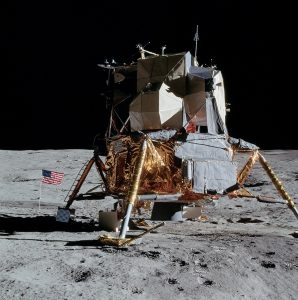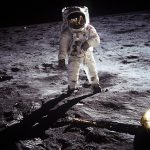July 20, 2019
50th Anniversary of the Moon Landing!
I know this will age me – but I remember the Moon Landing – I won’t tell you how old I was at the time, though! It was incredible to witness and I dreamed – as so many other kids did – of becoming an astronaut.
Obviously I did not fulfill that dream, for oh, so very many reasons. But, my awe at what the engineers, mathematicians, scientists, and astronauts do, did not stop as I grew up. And now, this week is the 50th anniversary of Apollo 11’s landing on the moon! On July 20, 1969, Buzz Aldrin and Neil Armstrong landed on the moon, spending an historic 21.5 hours on it’s surface!
The First Men on the Moon: The Story of Apollo 11 is a fascinating book which tells the story of Apollo 11 – using transcripts from the flight and among the crew (not transmitted), mission reports, and post-flight debriefings. It is a fascinating read and it is like being in the control room, on Apollo 11, on the Lunar Excursion Module (LEM), and in the living rooms with the astronauts’ families.
Edwin E. Aldrin Jr (Buzz) Aldrin: “…’Okay. I”m on the top step.’ As he started down the ladder he provided commentary because one of his assignments was to evaluate the ability of a man to operate in the lunar environment, ‘It’s a very simple matter to hop down from one step to the next.’ As her husband appeared on the television, Joan (Aldrin) screamed with delight, rolled on her back and kicked her legs in the air, then sat up again and blew kisses.” (The First Men on the Moon: The Story of Apollo 11; pg. 265).
(Think you know Neil Armstrong’s famous quote? Maybe. Maybe not. It is actually “that’s one small step for a man, one giant leap for mankind.” [emphasis mine]. The transmission was a bit garbled and the “a” is hard to hear…)

While Buzz Aldrin and Neil Armstrong are the best known astronauts of the Apollo 11 crew, there was a third crew member, Michael Collins. He was assigned to stay in lunar orbit during the expedition. When asked if he was frustrated he wasn’t going to be able to walk on the moon, he said, “… all three seats are necessary …. I am an integral part of the operation, and am happy to be going in any capacity.”
The three astronauts were all different and handled the stress of the flight – and all the fame, fortune, publicity, and the “excruciating itinerary” for the “Giant Step” tour which followed – in different ways. They had been in space for 8 days and spent 17 days in quarantine in the Lunar Receiving Laboratory (LRL), which was basically a modified mobile home. The Giant Step tour began on September 29, 1969 and ended on December 3, 1969. It is estimated that by the time their world tour was over the astronauts had been seen in person by 100 to 150 million people and of those, it is said that 25,000 received a handshake or signed autograph directly from the astronauts. Neil Armstrong mostly remained outside the spotlight and Michael Collins a little less so. Buzz Aldrin seems to have embraced it all after a series of problems after the flight.
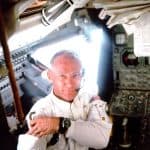
Buzz Aldrin was treated for anxiety during the Giant Step tour and later drinking became a problem. His autobiography, Magnificent Desolation: The Long Journey Home from the Moon, chronicles the Apollo 11 space flight, and the lasting effects it had on his life, including the depression and drinking.
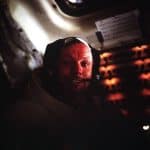
Neil Armstrong adapted to the quarantine by playing the ukulele his wife had stowed inside the LRL. He noted, “We really needed that time to be able to do all of the debriefings and talk to all the various systems guys. … Of course, we would have liked to have been with our families, and we were prevented from that. But we knew they were not far away. All the uncertainty was gone.”
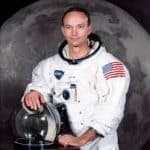
Michael Collins believes he looks and acts the same outwardly, but he does feel different. “I’ve been places and done things you simply would not believe . . . I’ve seen the earth eclipsed by the moon and laughed at it. . . . I’ve been pierced by cosmic rays on the endless journey from God’s place to the limits of the universe, perhaps there to circle back on themselves and my descendants. … Although I have no intention of spending the rest of my life looking backward, I do have these secrets, these precious things that I will always carry with me.
One of our many resources is Historical Guide to NASA and the Space Program, which contains an comprehensive list of acronyms and abbreviations, a chronology, appendixes, and an extensive bibliography. It also has a dictionary section which contains over 500 cross-referenced entries covering everything from space missions, astronauts, space shuttles, and more. A definitive guide to help you find more about NASA and space exploration!
Interested in more information about space flight? Stop in and check out the TK789.85 section in our book stacks! Located on the lower level, you may sit in one of our comfortable chairs or study carrels in our dedicated quiet space.
Interesting fact: the rocks brought back from the moon were required to clear United States customs formalities!
This video: What Aldrin Saw compares film from the landing of Apollo 11 (left) with a simulated reconstruction (right) based on data from NASA’s Lunar Reconnaissance Orbiter. Credits: NASA/Goddard Space Flight Center/Arizona State University
Be sure to check the NASA website for a list of the special activities that are being planned – including both Saturday (the 20th) and Sunday (the 21st) NASA TV broadcasts!
The Eagle has landed.
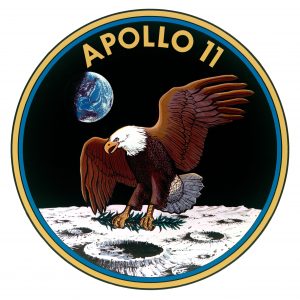
Resources:
Beardsley, Ann; C. Tony Garcia; Joseph Sweeney, authors. 2016. Historical guide to NASA and the space program. Lanham : Rowman & Littlefield. Engineering Library TL789,8.U5 B427 2016
Harland, David M. 2007. The first men on the moon: the story of Apollo 11. New York, Berlin : Springer 2007. Engineering Library TL789.8.U6 A53846 2007
Burgess, Colin, editor. 2010. Footprints in the dust : the epic voyages of Apollo, 1969-1975. Lincoln : University of Nebraska Press. Engineering Library TL 789.8.U6 A53334 2010.
Aldrin, Buzz; Ken Abraham. 2009. Magnificent desolation : the long journey home from the moon. New York : Harmony Books First Edition. Engineering Library TL789.85.A4 A3 2009
Video Credit: Lunar Reconnaissance Orbiter Camera Simulates View from Lunar Module. July 16, 2019. Celebrate Apollo: NASA.
NASA Adds Events to Celebration of 50th Anniversary of Historic Moon Landing. 2019. NASA
Featured Post Image: Apollo 11 astronaut Buzz Aldrin on the moon. Image Credit: NASA
Additional Resources:
Wagener, Leon. 2004. One giant leap : Neil Armstrong’s stellar American journey. New York : Forge First edition. Engineering Library TL789.85.A75 W34 2004
Apollo 50th. NASA. Date Accessed: July 2019
NASA Quotes : The Apollo Missions to the Moon.
Read about how State University of Iowa professor’s research helped make the moon landing possible: McCartney, David. Old Gold: How Iowa Research Made the Moon Landing Possible. University of Iowa Center for Advancement. Date Accessed: July 2019

